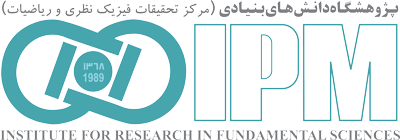“School of Astronomy”
Back to Papers HomeBack to Papers of School of Astronomy
| Paper IPM / Astronomy / 18198 |
|
||||||||||||||||||||||||||||||||||||||||||||||||||||
| Abstract: | |||||||||||||||||||||||||||||||||||||||||||||||||||||
|
Radio continuum observations are a uniquely powerful tool in the pursuit of understanding how galaxies form and evolve over cosmic time, one of the key goals of modern astrophysics. Concernong our study, MeerKAT consists of 64 * 13.5 m dishes with offset Gregorian optics, providing an unblocked aperture. It is equipped with three receiver bands: UHF (544-1088 MHz), L band (856-1712 MHz), and S band (1750-3500 MHz). Three-quarters of the collecting area is within a dense, 1 km diameter core region, and the remaining dishes are situated around the core, providing a maximum baseline of 8 km. The large number of baselines, wide field of view (1 deg at L band), and low (~20 K) system temperature all conspire to make MeerKAT an exceptionally fast and capable synthesis imaging telescope.
Also coming in at the deep end is MIGHTEE (MeerKAT International Gigahertz Tiered Extragalactic Explorations). MIGHTEE is one of MeerKAT's flagship Large Survey Projects, a galaxy evolution survey that is using simultaneous continuum, polarimetry and spectral line (Maddox et al. 2021A&A...646A..35M) measurements to investigate the formation and evolution of galaxies over cosmic time. It will use ~1000 h of observations with MeerKAT's L-band receivers, with the goal of imaging 20 deg2 over four extragalactic deep fields, namely COSMOS, the Extended Chandra Deep Field South (E-CDFS), the southermost field of the European Large Area ISO Survey (ELAIS-S1), and the XMM-Newton Large Scale Structure field (XMM-LSS).
After data processing and data productions (partly made with the PYBDSF algorithm, see respectively section 2 Observations and data processing and 3 Early science continuum data products) we product two level-1 catalogue cosmosl1.dat and xmmlssl1.dat which synthetized and compiled all the radio components retreived from these two interesting fields. Further, (i.e see the section 4 Discussion) we discuss succesively on Astrometry verification (section 4.1), Photometry verification (section 4.2) and Reliability of resolved sources (section 4.3) in order to check data quality of our samples.
Download TeX format |
|||||||||||||||||||||||||||||||||||||||||||||||||||||
| back to top | |||||||||||||||||||||||||||||||||||||||||||||||||||||



















